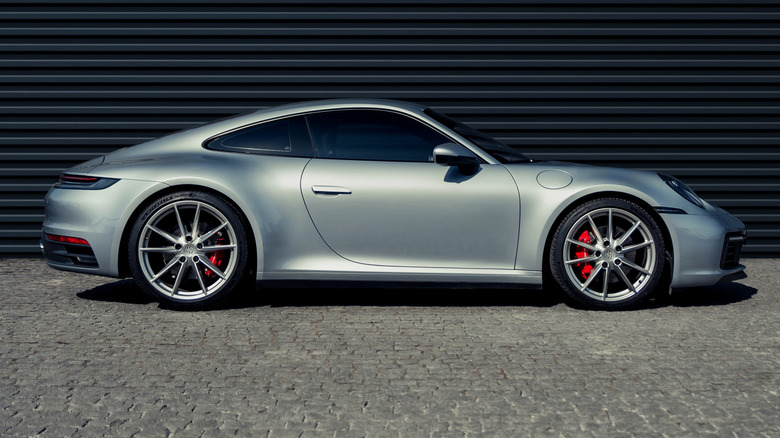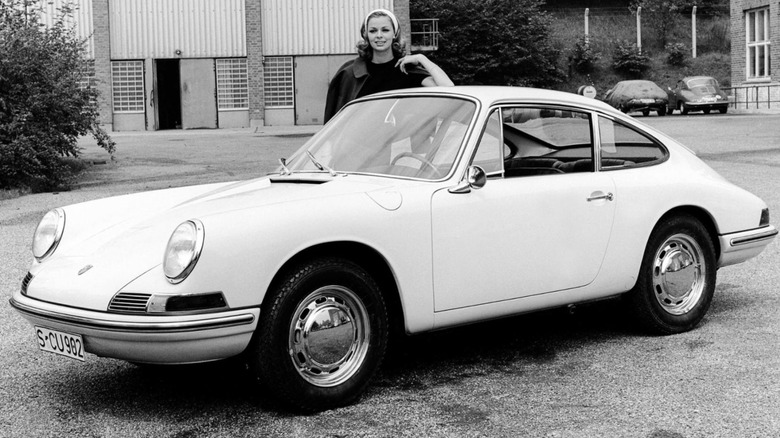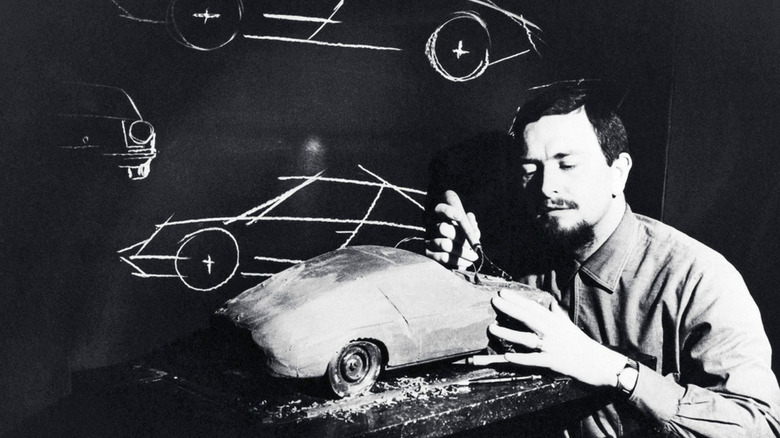Why The Porsche 911 Is Called '911'
In the history of sports cars, there is arguably no ride that has commanded as much adoration and well-deserved longevity as the Porsche 911. In a history spanning over seven decades, Porsche has sold over a million units of the 911 in different configurations. A highly coveted collector's item, the 911 is also considered special for its engineering excellence. Porsche claims that more than 70% of all the 911s ever built are "still ready to drive today," and the car has won over half of the 30,000 race victories notched by the entire Porsche portfolio.
For a car as widely celebrated in the automobile industry, it must come as a surprise that Porsche initially decided on a slightly different name for the ride. Prior to its debut at the 1963 Frankfurt International Motor Show, the name locked for the car was "Porsche 901." It was a legal threat from a French carmaker that forced Porsche's hand, and the name was eventually changed to 911. Peugeot apparently held the legal naming claims for three-figure numerical car model names with a zero in the middle.
Porsche was ready to ship the 901, but right ahead of its commercial journey, Porsche claims to have received a "friendly but distinct letter" from the fellow carmaker. Automakers bickering over the names of cars being "too similar" is nothing new. In 2011, Ford sued Ferrari over the F150 designation of its race car due to similarity to the former's F-150 truck. The 911 name was borne out of a similar tussle.
When numbers play the game
In 1963, as Porsche was prepping its new car for a splashy introduction, Peugeot dropped a surprise — designations such as 802, 703, and 901 were beyond Porsche's reach. But Porsche was already ahead in the design process for its legendary car with the aim of embossing the "901" identifier with a golden paint coat on top. The branding would appear in numerous places, such as the dashboard and the back of the car. "These letters were already produced. So, they had the '9.' They had the '1,'" explains Porsche in a YouTube video.
Even the metallic letters that were supposed to go on the car's rear were punched. In hindsight, the name "nine eleven" rolls much easier off the tongue compared to the plainer "nine oh one" name, so there's that unintended phonetic advantage landing in Porsche's favor. Porsche, of course, did its research to ensure that there were no other cars on the road carrying the 901 commercial moniker. Where luck ran out for Porsche was a technical branding rule protected by local laws.
"Peugeot claims the principle of the middle zero: a three-digit number with a zero in the middle. In France, they own the legal rights to all similar number sequences," explains Porsche, adding that the name 910 would be in violation of copyright and trademark protection laws in France. The German automaker claims that the news of a brewing legal challenge landed at the "worst possible time," because all the branding and marketing material, such as the logo, pamphlets, and posters with the nixed 901 name, were ready.
A stroke of genius, from a genius
The history behind the name change is pretty fascinating, one that blends an unexpected legal hiccup with human ingenuity. In a 1963 post, Porsche recounts that "a mood of optimism and excitement almost bordering on euphoria" was breezing through its Zuffenhausen facility. The car was ready. The branding materials were at hand. But the bombshell of Peugeot's numerical copyright shield came in like a wrecking ball. But thanks to the chief designer, Ferdinand Alexander Porsche, Porsche emerged unscathed out of the situation.
"He simply doubles the '1' in the name. What a symbolic gesture. The zero becomes a one. The 901 becomes the 911. And the 911 becomes a legend," wrote Porsche. And it was only fitting that the chief designer got the final say in the matter. Lovingly remembered as "F. A." in the annals of Porsche's history, he began working on the 901, "his masterpiece," in the early 1960s. And thanks to his stroke of genius at the 11th hour, the world got the masterpiece that we now know as the Porsche 911.
Ferdinand A. Porsche also greenlit the idea of switching from a chrome finish on the window surrounds and trim to a matte black tone. In addition to lending his expertise in designing race cars, he also tried his hand at crafting watches for the Porsche AG wing, culminating in the birth of the Chronograph I, touted to be the first watch with a black case and a matching dial, and the best-selling item to come out of the Porsche design studio. Ferdinand Alexander Porsche left this world in 2012, but his legacy continues to live on with the Porsche 911, even in its electric avatar.


